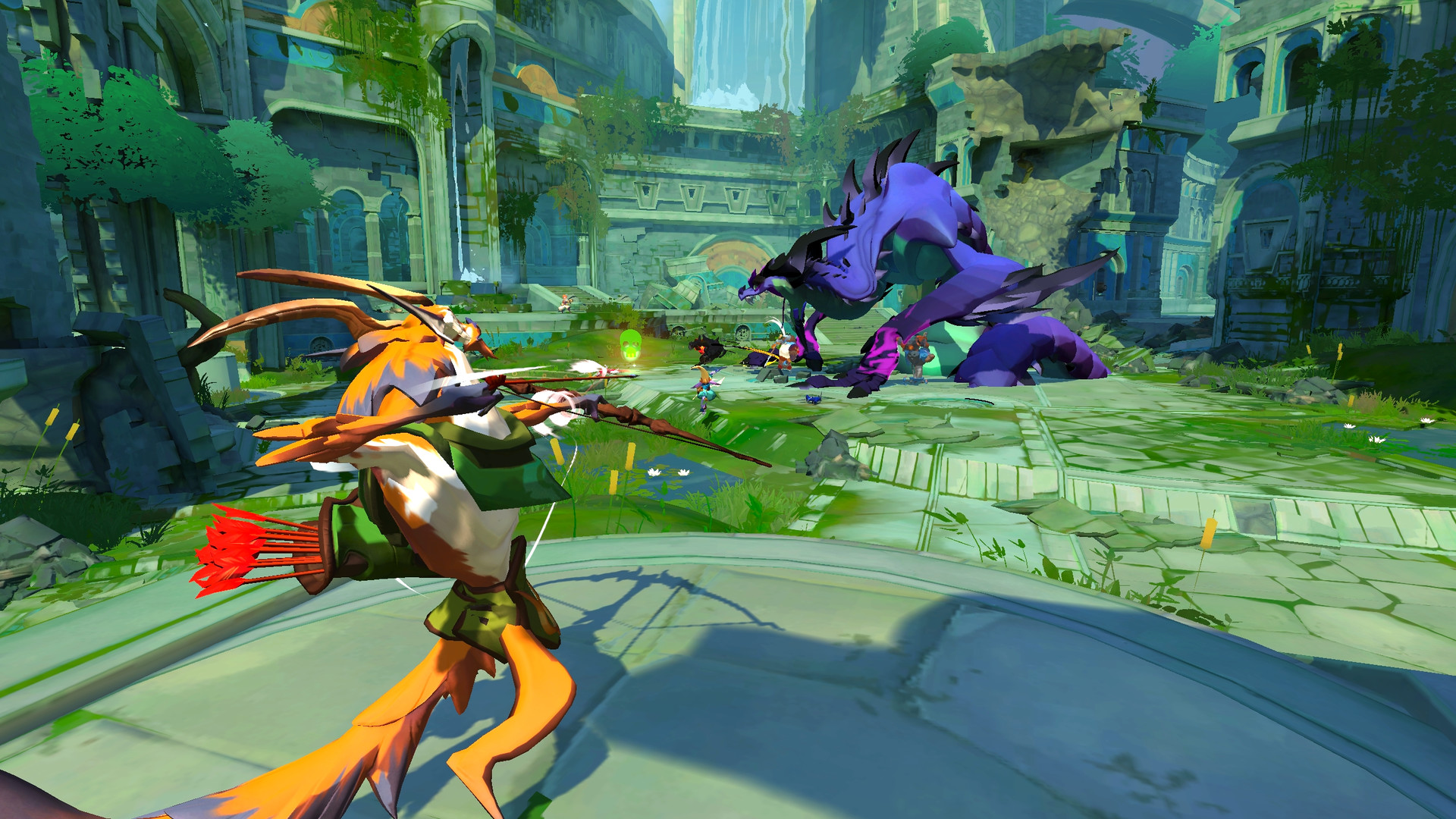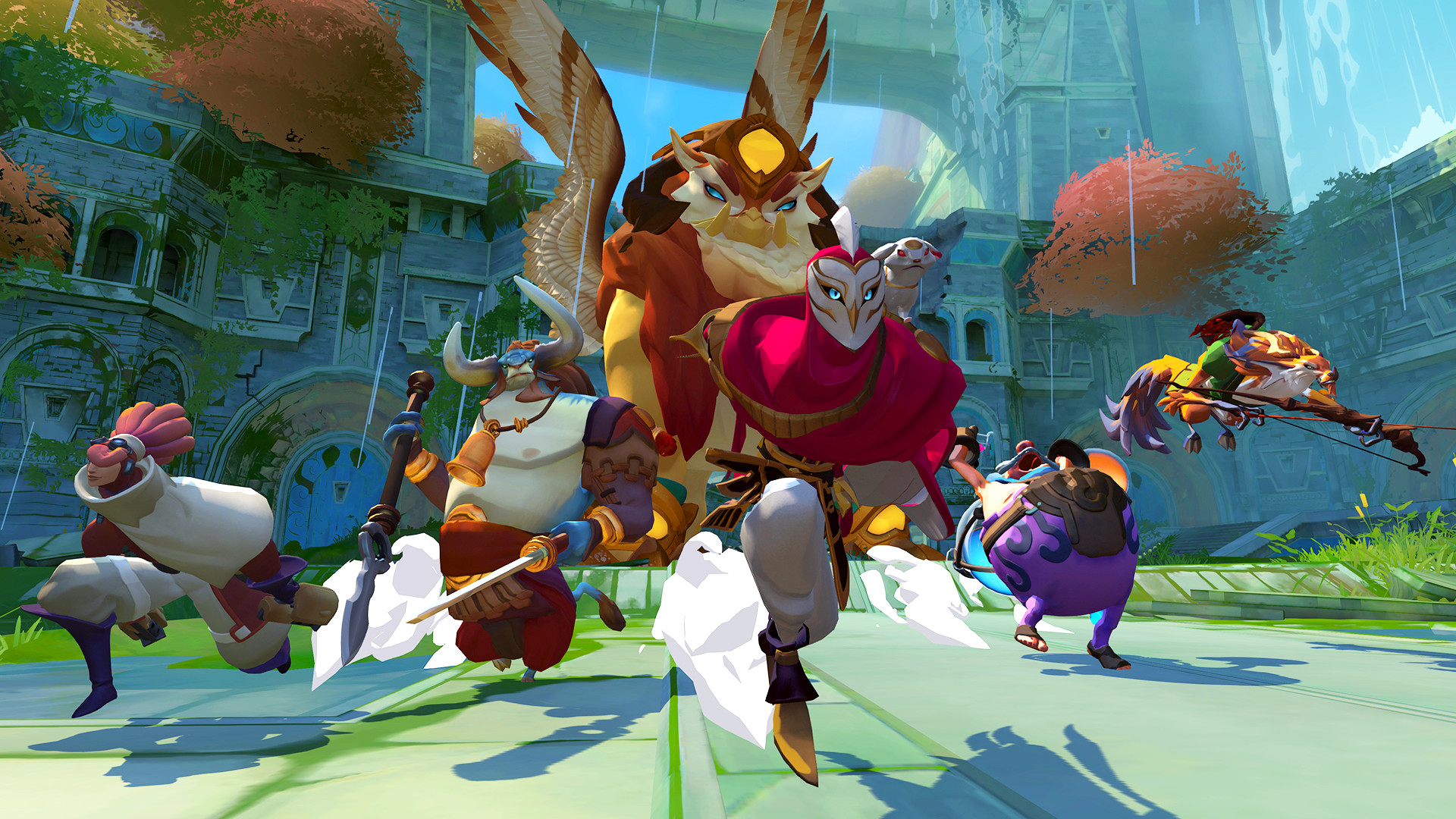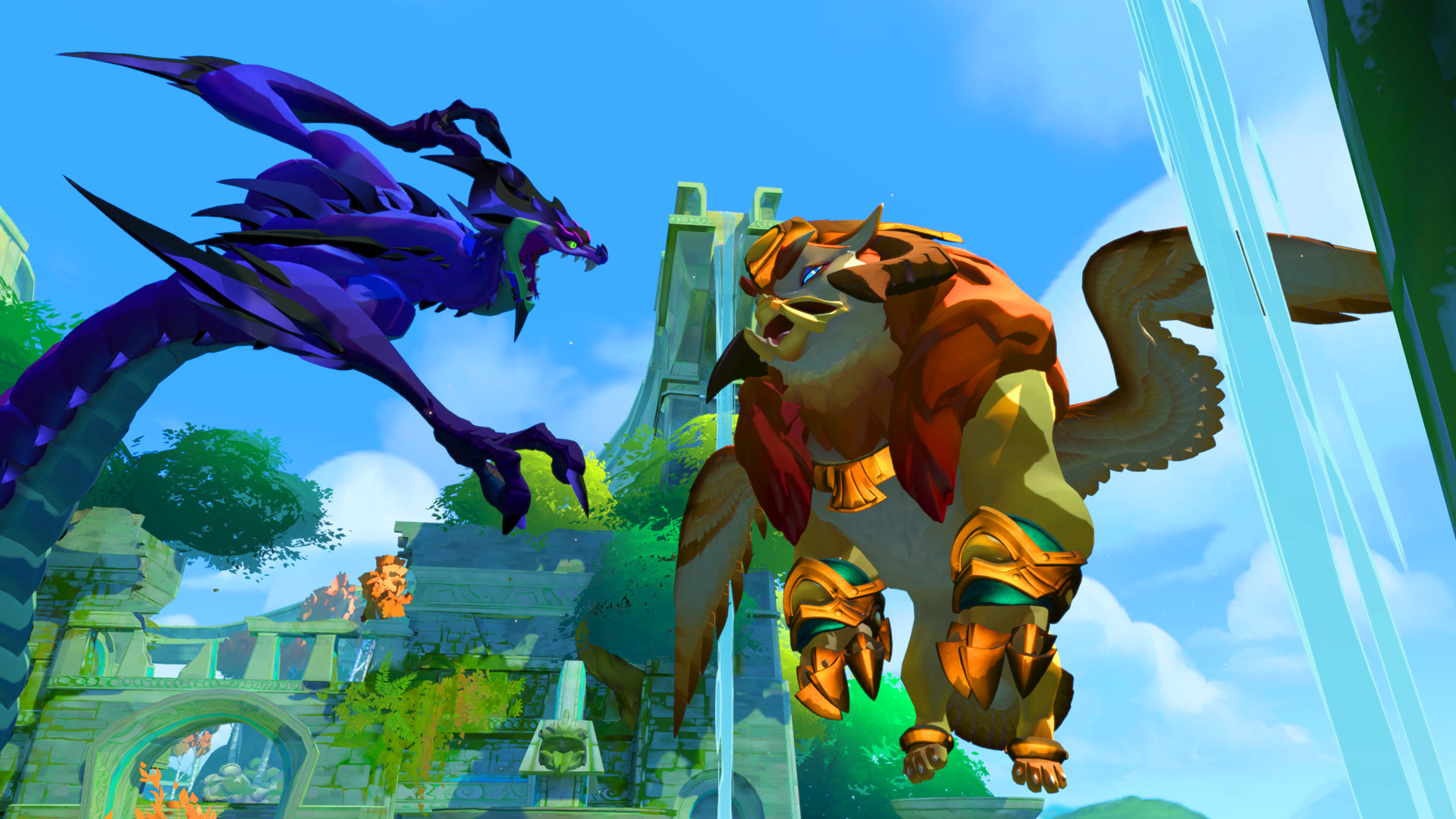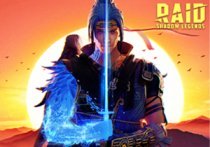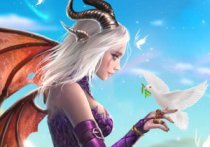Gigantic Launch Review (PC)
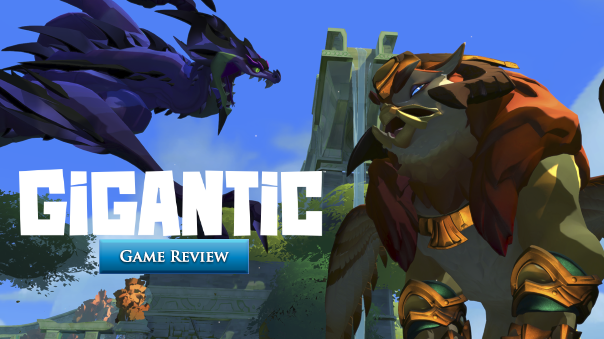
A Hero Shooter, a MOBA and a Grand Adventure Rolled into One
For the past few years, one indie game development studio, named Motiga, has had many ups and downs as they have been tirelessly working on their debut title. There was so much at stake for this studio that they had to lay off some good employees, had active employees work for free, and were nearly on the verge of having their studio get shut down… TWICE. But through it all, they managed to keep their eyes on goal and get their game across the finish line. Simply known as Gigantic, this is a team-based game that blurs the line between so many game genres that it’s actually kind of difficult to really categorize this game under a specific genre. Hell, even the developers didn’t know whether to call it a MOBA or a third-person shooter for a while, because its various game mechanics, varied hero roster, and other elements place this game into a league all its own.
I’ve had my eye on the development of this game ever since it was announced back in July of 2014. I was lucky enough to get into the early alpha tests for the game, and back then I couldn’t help but say: the game is already fun and polished, so why not release the game now? I sure was satisfied with the game, but the developers at Motiga sure weren’t. They were always looking for feedback, seeking ways to improve the game until it was perfect. Each alpha test and beta test was treated like an actual test, and not a glorified preview demo simply pushed out as a marketing tool- and that’s something you don’t see very often these days with new game releases. While some changes have been made for the better and other arguably for worse, they did everything they could to deliver on a product that was quick, exciting, understandable, and overall fun.
Now I could go on and on about how much time, effort, and love that Motiga placed on Gigantic, but that’s a story for another day. For now, let’s dig deep into the official launch release of Motiga’s debut game.
Controls
Knowing how to control your character throughout the battlefield is very important to surviving in the world of Gigantic, as the game was designed with various movement options. While all characters can perform sprints and dodges, melee-based characters can use their dodges to not only to avoid attacks, but also to perform counter skills, some of which can apply extra or passive damage. Not only that, but attacking while in the air lets melee classes perform a forward lunge that allows players to close the gap or secure kills on fleeing enemies. Sprints, dodges, and jump attacks can be chained together, with every animation blending together well enough that players will never feel like they’re bogged down until they’re in the middle of a fight. Being able to control your character so fluidly is one of the more enjoyable aspects of Gigantic, and one that makes the game feel unique compared to other team-based shooters or MOBAs.
If you’re a seasoned action game player, then getting a feel for the controls will take no time at all. However, it will take some time to get used to Gigantic’s stamina management. All movement (and some attacks) is tied to a stamina meter which can easily be drained during combat if you’re not careful. I find the stamina meter to be a bit frustrating at times, but I can completely understand why it was implemented in order for fast characters like Tripp and Tyto from being too fast to pin down. In so many situations, players have to choose whether to attack or flee in a split second notice, and it can feel downright depressing when trying to secure at kill on a fleeing opponent or trying to get away from an angry mob, only to realize that your stamina bar is all gone from the last team fight you encountered.
Gameplay and Features
While Gigantic isn’t big on game modes or maps, it’s certainly big on gameplay. There is only game mode available, and while it doesn’t have a specific name, for the sake of having something to refer to I’d like to call it “Guardian Battle”. This game mode is about powering up your giant guardian by defeating enemies while summoning and protecting spirit monsters that controls various points on the map. Once the guardian has enough power, they will travel over to the enemy guardian and pin them down, opening them up to take damage. Each guardian has three health bars that need to be taken down one after the other, with the first team to deplete all three bars claiming victory.
Sounds simple enough, but with lots of delicate functions and mechanics to learn and strategize on, Gigantic is not an easy game to pick up and play. Even with the game’s extensive tutorial that players have to go through before even starting a match, it will take at least three or so games before new players will have a grasp on what to do. Until then, players should prepare themselves for complete and total confusion.
Still, compared to how the game was during the previous alpha and beta tests, the way Gigantic is now is still miles better in terms of conveyance and accessibility. Previously, players could kill monsters on enemy bases while summoning their own monsters in its place, which allowed teams that already gained an upper hand on their opponents to snowball the entire match. Not only that, but players could also sneak up towards enemy guardians and attack their glowing patches on their head or chest to steal power for their own guardian, which completely undermined the value of killing enemies or protecting summons. While I do miss the extra PvE element of being able to attack the guardians head on, I can see that this was a necessary change needed to keep the goals and strategies of Gigantic straight forward.
As previously mentioned, Gigantic still has a small PvE element left intact. Players can summon a variety of monsters on various points of the map. Comparable to monster camps or jungles in MOBAs, controlling and contesting the map with different summons is just as important as defeating enemies, as summons can provide a ton of benefits such as dedicated healing, area denial, crowd control and extra damage. This also plays into how free form that team compositions can be. Players won’t need to have dedicated healers or tanks on their team if they’re good enough to play around their summons which can achieve the same goals, which is something that I can really commend the game for pulling off fairly well. These summoned monsters also don’t go down very easily, so removing an enemy’s summon from the playing field takes a team effort.
While playing through the same game mode and the same maps may get stale, Gigantic keeps things interesting by offering up a side quest system in the form of “Fortune Cards.” Selecting a card from a daily draw (or purchasing them) allows you to choose between one of three cards with different objectives on them, such as gain 30 consecutive kills as Margrave or gain 10 assists as Vadasi. While some objectives are more difficult than others, they offer up considerable amounts of crowns and prestige EXP for completing, allowing you to unlock new monster summons, new summons, and even new heroes. While it’s nothing new or unique, it’s a fun and easy way to keep matches entertaining while giving players the satisfaction of completing a goal, even if they don’t win a match. The only downside is that you can only draw one card a day while holding up to six cards at a time. The only other way to draw more cards is to spend rubies, which is kind of redundant since players could simply use their rubies to purchase extra crowns directly from the in-game store. But then again, I suppose if you’re an excessive completionist or an achievement hunter, the option is there for you.
The skill system in Gigantic is deceptively complex, as players may choose between various upgrades for their skills during battle. With each skill having two upgrade paths, and each upgrade path having two more paths, this adds up to a total of 30 skill choices. Along with three passive battle traits to choice from after hitting LV5, it can be overwhelming to not only choose the right skills for you, but for your team composition and the enemy’s team composition as well. While it’s quite difficult for new players to have to make so many decisions on the fly, this kind of open skill system is one of the key factors that I personally see giving Gigantic some long lasting appeal in terms of a competitive game.
Notice that the enemy team has too many healers or healing abilities while playing as Voden? Build him up for poison damage to negate some of that healing. Too many fast and nimble enemies trying to rush and run while using height their advantage while playing as Oro or Xenobia? Cripple them so their speed and jump height gets reduced. No matter the situation, there’s always an optimal build for each hero in many different situations. With so many different builds and ways to play a single hero, it means that no hero will ever get left in the dust. I would say that there should be very little issues with any hero being considered a “bad/troll pick”, unlike a certain popular hero shooter on the market.
The absolute best thing that I’ve always admired about Gigantic, long before hero shooters like Overwatch came onto the scene, was how each and every hero was design not only classic game archtypes, but also reflect different game genres. Like playing hack & slash games that require finesse like Devil May Cry or Ninja Gaiden? Try playing as Tyto the Swift or Tripp. Enjoy playing fighting games where you can chain attacks together into long combos? Give Wu a try. Enjoy RTS games while letting your units do all the work? Maybe Griselma is your character.
This extends way beyond what Overwatch has achieved in a similar fashion by creating a hero that fits every kind of player or play style. Not only does Gigantic achieve this, but expands on it by not dumbing down the characters in terms of their skills. All characters in Gigantic have access to five skills and 30 upgrades, unlike Overwatch where not all heroes are created equal, with some heroes having up to six attacks/abilities at a time while others only have three. All heroes having an equal amount of abilities means that no hero will ever feel gimped.
Customization
As a free-to-play title, Gigantic’s customization system is very simple and quite enjoyable to use. Through the use of crowns (Gigantic’s in-game currency), players can unlock new skins and weapons for their favorite heroes. While mixing and matching between palette swaps and complete redesigns, players can make their hero stand out a bit more during a match. The best thing about the customization is that nearly all cosmetic items can be bought with crowns. While it does take a while to earn those crowns, players that are constantly playing matches while completing their fortune cards will be able to earn plenty of cosmetics at a steady pace.
Visuals and Presentation
Quite easily the best part of Gigantic is the visual presentation, as the game uses a cartoon shading style that is very reminiscent of titles such as LoZ: WindWaker. Mixed in with detailed environments, slick and flashy battle effects, and the massive guardians that tower over the battlefield, it adds up to visually energizing experience. Character designs for the game are also on point with unique and memorable designs that I’m sure everyone will find one that they’ll fall in love with. I’ve said this before in one of my earlier impressions on the game, but Tyto the Swift, a mysterious swordsman only has one arm, but most players won’t even notice the missing arm because of how Tyto’s partner, Fang, rests on Tyto’s shoulders while the cape/cloak trails down and away from his body, completely drawing your eyes away from his missing side. Plus, all the characters in general just have a distinct personality to them that looks natural and comprehensible at first glance. You don’t even need to play the character or hear the character’s voicelines to understand what they’re about. You’ll be able to know everything about them simply by looking at them. That’s the kind of good character design that you would see in Disney and Pixar films, and it absolutely has been achieved in Gigantic.
Speaking of which: the voice dialogue is sadly weaker than the character designs overall. They’re not bad by any means, do not get me wrong, but the voices for most heroes sound a bit like they were phoned in. Characters like Tripp sound a bit too bored and casual for a dark and mysterious assassin, while Wu’s voice doesn’t seem to have enough of that “coolness” factor that one would expect from an overconfident martial artist (all while Wu attempts to low-key slip in some internet memes like Pepe and “Dat Boi”… Yes, I know what you were trying to do, Motiga, and I can’t say I approve of this!) And overall, the voice cast for these characters just sound average at best. Certainly not a deal breaker or an immersion breaker, but I felt like their performances could have been better.
Overall: Great (4/5)
Gigantic is a pretty impressive game with an even more impressive history behind it. Through all the hardships that Motiga has gone through (Again: this company nearly went out of business TWICE), they still pulled through and managed to make one of the most unique team-based actions games created, with tricky but rewarding gameplay, good visual presentation and a monetization system that can’t be beat. Once you learn all the heroes, the skill builds and the summons, playing through a single match of gigantic feels like a grand adventure, with your giant guardian cheering and jeering at your every move, your teammates coming together to launch an all-out assault on the enemy. For those that love MOBAs, hero shooters and many other genres in the esports spectrum, this is a game that simply shouldn’t be looked over.
Articles You May Enjoy
- MLG and ESPN Bringing eSports to X Games Aspen
- The MLG X Games Aspen Counter-Strike: Global Offensive (CS: GO) Invitational will take place in Aspen, Colorado, from January 23-25, 2015 and ...
- Gloria Victis: End of Year Updates
- During the last months Gloria Victis development was focused mostly on polishing the core gameplay mechanisms and increasing the game’s perf...
- Camelot Unchained: Extender Pack and Pet Class Announced
- Camelot Unchained: Extender Pack and Pet Class Announced


